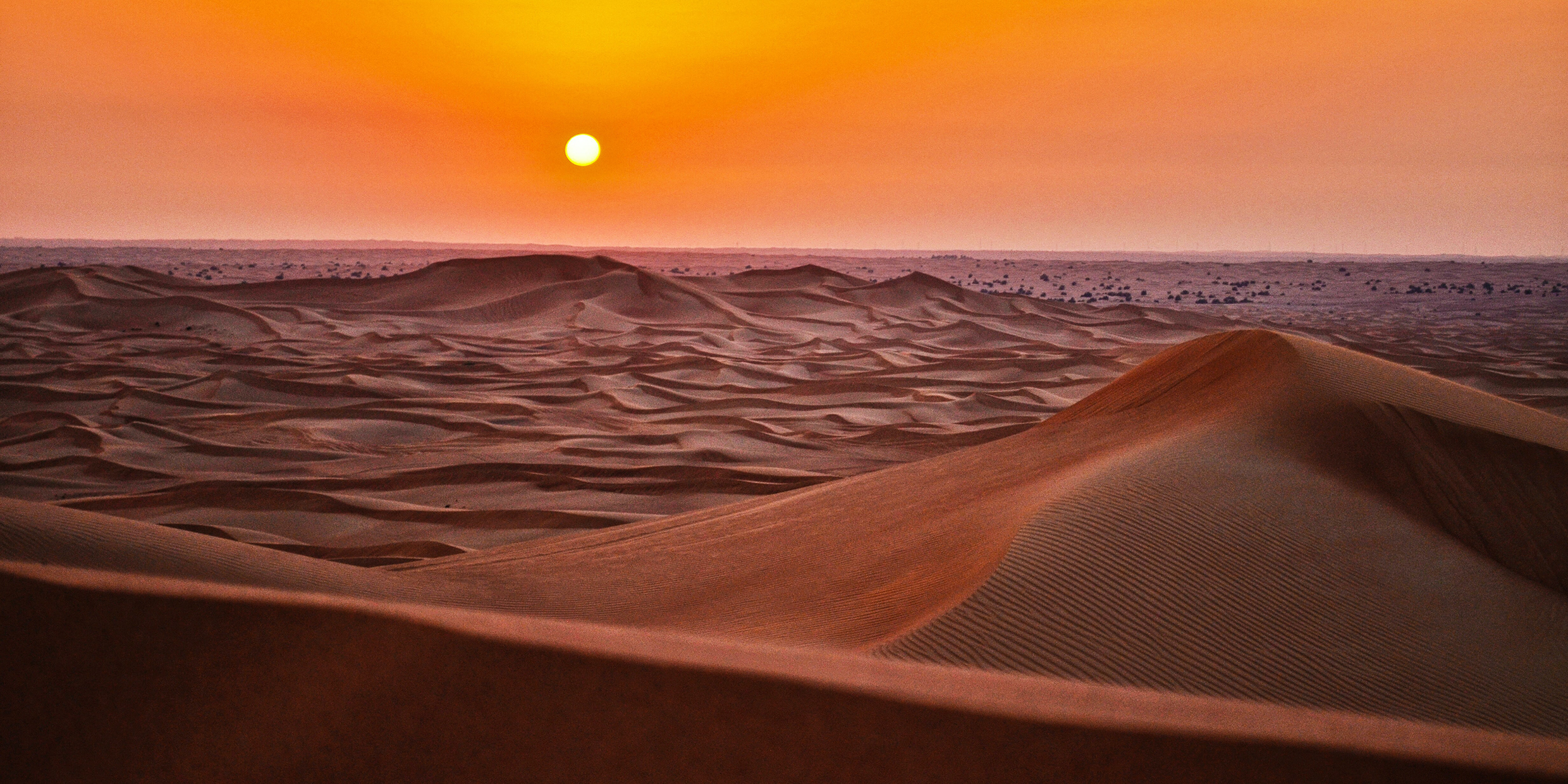Originally published 16 December 1996
Sahara! Rolling dunes, sun-bleached rocks. Camels and date palm oases. Salt caravans and shimmering mirages. Bedouins in flowing robes. The hidden city of Timbuktu. The French Foreign Legion.
Sahara! Three thousand miles of sweltering sand. The largest desert on the face of the Earth. On colored relief maps of the Earth, the Sahara appears as a great scorched blister. Never has the scorched blister looked as good as in the film adaptation of Michael Ondaatje’s novel The English Patient.
At the heart of the desert and the heart of the film is a rock grotto known as “The Cave of the Swimmers.” On the walls of the cavern are graceful, stylized human figures, painted thousands of years ago by a pastoral people who inhabited these now bleak regions. Among the figures: swimmers.
Swimmers! In the midst of thousands of square miles of dry sand. These powerful images are rich with possibilities of metaphor, fully exploited by the film. They also tell a scientific story of climate change on global scale.
Across the entire breadth of North Africa, wind and sun have contrived a bleak, inhospitable wasteland. But it has not always been so. Climate is a fickle friend or foe. Not many thousands of years ago the Sahara was a fertile grassland, coursed by sparkling streams and teaming with wildlife.
Eight thousand years ago the final vestiges of the last ice age lingered in Europe. The global cooling that produced the continental glaciers, along with the compounding effect of the glaciers themselves, moderated climate worldwide. Rains fell and water flowed in places where today there is only burning sand.
The Sahara was fertile until about 2,500 years B.C., when changing climatic conditions allowed the region to take on its present forbidding aspect. Races of herdspeople thrived on lush grasslands, developing ever more advanced societies. They left a vivid record of life on the green Sahara in rock paintings of a wonderful delicacy and beauty.
Some of the best preserved of these works of art are found in the high central plateaus, particularly at Tassili n’Ajjer, a place whose name means “plateau of the rivers.” The paintings are the most complete record of stone age life found anywhere on the planet. Ironically, they have been preserved by the same dry air that brought about the decline of the culture they record.
The rock art of the Saharan plateaus depict a grassland ranged by elephants, hippos, and giraffes. There are images of a resourceful people who tended herds of cattle, dug wells, and harvested wild grains. There are frescoes depicting music and dance, religious rituals, war — and swimmers.
The riddle of the once river-coursed sands has been unraveled by geologists, paleobiologists, and climatologists. Clues for solving the riddle have included fossil microorganisms in sea floor sediments, pollen grains, and air bubbles buried deeply in the Antarctic and Greenland ice caps, growth rates of ancient coral reefs, and the artistic works of prehistoric humans.
We now recognize that the terrestrial weather system is a finely-tuned engine of astonishing complexity, subject in the smoothness of its running to minute variations of a hundred controlling elements.
The changing orientation and distance of the Earth to the sun is a crucial factor. Slight changes in the energy output of the sun, the drift of continents, rising mountains, the opening and closing of crucial “valves” such as the Gibraltar strait and the Panama isthmus, and varying amounts of carbon dioxide in the atmosphere, all exert an unsteadying influence.
A change in average air temperature of only a few degrees is enough to trigger an ice age or dry up a Sahara. So delicate is the balance of forces that control climate, and so various are the contributing factors, that only the boldest climatologists or outright oracles will dare predict long-term trends.
One thing is clear, however. We have the ability to tip the balance, to nudge by our actions the global climate towards warmth or ice — to extend the deserts, to dry rivers, to melt ice caps, to turn cool grottoes by pools of clear water into the inhospitable abodes of pit vipers and spiders.
The fictional English patient and his archeological colleagues are modeled on the scientists who discovered and described the Saharan rock paintings during the 1930s. Today, the desert caves that were once Sistine Chapels of a flourishing agricultural civilization have become the destinations of tourists who fly into remote landing strips, then follow ancient camel tracks in four-wheel drive vehicles to view the art.
Scientific curiosity brought these frescoes to the attention of the developed world. They are now threatened by tourism, pollution, and vandalism.
The popularity of the film The English Patient will undoubtedly increase the destructive pressure. The survival of this extraordinary Ice Age art will depend upon wise conservation by the governments of North Africa — and support and restraint by the rest of us.



